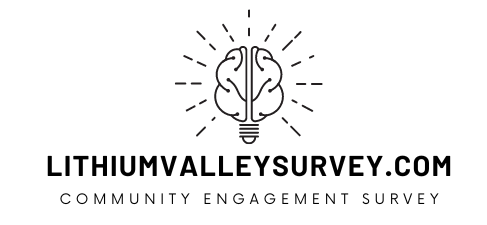Are you curious about the Lithium Valley Programmatic Environmental Impact Report (PEIR) and what it entails? Maybe you are interested in learning about PEIRs in general, or whether it’s required for this particular project. This blog post will break down the key aspects of PEIRs, when they are required, and where you can find the Lithium Valley PEIR. So buckle up, and let’s dive into the world of environmental reports!
What is a Programmatic Environmental Impact Report (PEIR)?
A Programmatic Environmental Impact Report (PEIR) is a comprehensive document that assesses the potential environmental impacts of a specific project or program, as well as the possible alternatives and mitigation measures. It aims to inform decision-makers, regulatory agencies, and the public about the environmental consequences of a proposed project. A PEIR provides the foundation for future assessments and approvals, streamlining the environmental review process for individual projects.
PEIRs are prepared under the California Environmental Quality Act (CEQA) and must address various concerns, including but not limited to air quality, water resources, biological resources, cultural resources, greenhouse gas emissions, and population growth.
When is a Programmatic Environmental Impact Report required?
A PEIR is required for a project when there is a potential significant impact on the environment. The process typically begins with an Initial Study to determine if a project may have one or more significant environmental impacts. If the Initial Study finds that a project may have potential adverse effects on the environment, a PEIR is then required.
Alternatively, a project’s proponent or the lead agency (typically a governmental body) might choose to prepare a PEIR voluntarily if they believe it will be beneficial, providing a comprehensive analysis for future decisions or to facilitate the approval of similar projects in the area.
Diving into the Lithium Valley Programmatic Environmental Impact Report
The Lithium Valley PEIR is a detailed document that evaluates the environmental impacts of lithium extraction and processing facilities in Southern California (mainly within the Salton Sea region). This project has garnered much attention due to the increasing demand for lithium, a critical component in electric vehicle batteries and renewable energy storage systems.
The Lithium Valley PEIR examines the potential consequences of new lithium extraction and processing facilities on factors such as local wildlife, water resources, air quality, and cultural resources. It also delineates possible mitigation measures, ensuring that the project adheres to the highest environmental standards and minimizing adverse impacts.
Where can I find the Lithium Valley Programmatic Environmental Impact Report?
As a document of public interest, the Lithium Valley PEIR must be available to the public for review and comment. You can typically access this document through the lead agency’s website, in this case, the California Energy Commission (CEC) or the local government overseeing the project.
You can also reach out to the CEC’s Public Advisor’s Office for assistance in obtaining a copy of the PEIR. After reviewing the document, you can submit your comments and concerns during the designated public review period. Keep an eye on public notices and the CEC’s website for information on the release of the Lithium Valley PEIR and any accompanying public meetings.
Conclusion
The Lithium Valley Programmatic Environmental Impact Report is a crucial component in understanding the environmental implications of lithium extraction and processing in Southern California. By familiarizing yourself with this report, you can join the conversation about the environmental impacts and sustainable development of this burgeoning industry.
Remember, public participation is vital to ensuring a thorough review and responsible decision-making. So, don’t forget to voice your concerns and contribute to the shaping of a green and sustainable Lithium Valley.

